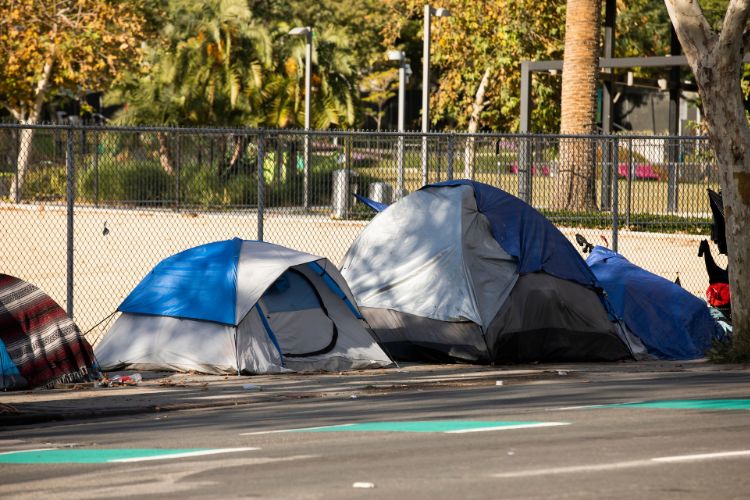The haunting reality of child homelessness persists in one of the world’s most developed nations – the United States. For these vulnerable children, factors such as poverty, faith, and community heavily influence their experiences. Delving into this pressing issue, we’ll explore its causes, consequences, and the roles various entities play in alleviating the plight of these innocent lives.
Prevalence of Homelessness Among Children in the US
Homelessness, a term often associated with destitution and societal failure, carries a specific legal definition in the context of the United States. It refers to the absence of “a fixed, regular, and adequate nighttime residence.” However, this definition is broad and encompasses various living situations, many of which might not immediately come to mind when considering homelessness.
Children and families may find themselves sleeping in vehicles, seeking temporary refuge in emergency shelters, or frequently moving between motels due to the lack of stable housing. Additionally, some might be doubling up with other families in cramped spaces, often because of financial constraints, making their living conditions inadequate and uncertain.
The gravity of the issue is highlighted by the staggering statistics from 2020: approximately 1.5 million children in the US grapple with homelessness every year. These aren’t just faceless numbers; they represent vulnerable kids stripped of stability and the basic comforts many take for granted. What’s even more disheartening is the evident racial and economic disparity in these figures.
Children of color, particularly Black and Hispanic children, as well as those from low-income backgrounds, are at a heightened risk. They disproportionately experience the challenges of homelessness, from the instability of their living conditions to the myriad obstacles they face in education, healthcare, and overall well-being. Such disparities underscore the systemic issues that perpetuate the cycle of homelessness and highlight the pressing need for targeted interventions.

Understanding the Causes of Child Homelessness in the US
Poverty
- Depth of the Issue: At the heart of child homelessness in the US lies the pervasive issue of poverty. An overwhelming majority of families experiencing homelessness have incomes that are considerably lower than the median income of the country.
- Impact of Financial Strain: When families are consistently burdened with financial challenges, prioritizing between essentials becomes a daily struggle. With the rising cost of living and stagnating wages, many families find themselves choosing between food, medication, childcare, and housing. All too often, the cost of stable housing becomes unattainable, resulting in evictions or voluntary departures due to an inability to pay rent or mortgages.
- Cascading Effect: The repercussions of poverty are multi-faceted. It not only denies families their basic necessities but also limits their access to quality education, healthcare, and employment opportunities. This creates a vicious cycle where the lack of one resource, like education, further entrenches them in poverty.
Faith-Based Organizations
- Historical Role: Faith-based organizations, spanning churches, mosques, temples, and other religious entities, have historically been at the forefront of humanitarian efforts in the US. Their involvement in addressing homelessness is a testament to their commitment to societal betterment.
- Services Offered: These organizations often go beyond their religious duties, offering a range of support services to homeless families. From providing emergency shelters and meals to organizing skill-building workshops and counseling sessions, they play a crucial role in both immediate relief and long-term empowerment.
- Emotional and Spiritual Support: Beyond the tangible, faith-based organizations provide a sense of community, belonging, and emotional healing. Many homeless individuals and families find solace in faith, drawing strength from religious teachings and the support of the faith community.
Community Resources
- The Double-Edged Sword: Community resources, which include educational institutions, healthcare facilities, and various social services, have a paradoxical role in the issue of homelessness. They have the potential to be both a part of the problem and the solution.
- Exacerbating Factors: A lack of access to quality education, affordable healthcare, and essential social services can further marginalize homeless families. For instance, children without a fixed address might face challenges in school enrollment, and without proper healthcare, minor illnesses can escalate into severe health crises.
- Potential for Positive Impact: Conversely, when these resources are made accessible and inclusive for homeless families, they can dramatically alter their circumstances. Schools can provide stability and a semblance of normalcy for homeless children, healthcare can prevent minor issues from becoming major impediments, and social services can offer pathways out of homelessness.

Consequences of Childhood Homelessness
Childhood, often seen as a time of innocence and exploration, can be severely marred by the traumatic experience of homelessness. The repercussions of such an experience ripple out, creating a series of interconnected challenges that can haunt a child for years to come.
Immediate Health and Safety Concerns
- Physical Health: Without a stable home, children are exposed to environmental hazards, be it extreme cold or heat, rain, or even potential violence in some areas. They might also lack access to clean water and nutritious food, leading to malnutrition or diet-related illnesses.
- Hygiene and Sanitation: Homeless children often struggle to maintain basic hygiene. This lack can expose them to skin diseases, infections, and other health complications.
- Safety Concerns: Being on the streets or in overcrowded shelters can expose children to various forms of abuse or exploitation, not to mention the risks of accidents in unsafe environments.
Long-Term Psychological Impacts
- Trauma and Stress: The instability and unpredictability of homelessness can be deeply traumatic for children. They might constantly worry about where they’ll sleep, what they’ll eat, or if they’ll be safe, leading to chronic stress.
- Emotional Well-being: Feelings of shame, embarrassment, or guilt are common among homeless children, especially when they compare themselves to their peers. This can lead to lowered self-esteem, a sense of worthlessness, or feelings of isolation.
- Developmental Delays: Prolonged stress and trauma can interfere with a child’s cognitive development. Homeless children may exhibit delays in speech, motor skills, or other developmental milestones.
Academic Setbacks
- Attendance and Performance: Without a stable residence, consistent school attendance becomes a challenge. Regular relocations, lack of transportation, or the daily challenges of homelessness can lead to frequent absences, negatively impacting academic performance.
- Lack of Support: Homeless children might not have a quiet place to study or access resources like books, the internet, or even basic stationery. Moreover, they may lack emotional and academic support from adults around them due to the myriad of challenges their families face.
- Dropout Rates: The cumulative effect of these academic challenges, combined with the immediate need of survival, often results in higher dropout rates among homeless students.
Impact on Mental and Emotional Well-being
- Mental Health Disorders: The stress and trauma of homelessness can predispose children to mental health issues like anxiety, depression, and post-traumatic stress disorder.
- Behavioral Challenges: Experiencing homelessness at a young age can manifest in behavioral issues. Children might become aggressive, withdrawn, or show signs of regressive behaviors like bed-wetting.
- Resilience and Coping: While many children exhibit signs of distress, some might also develop resilience. With the right support, these children learn coping mechanisms that serve them in the face of adversities.

Solutions and Implications for Addressing Childhood Homelessness
Targeting the Root – Poverty
- Understanding the Depth of Poverty: To genuinely address child homelessness, it’s crucial to acknowledge that poverty isn’t just a lack of money—it encompasses limited access to healthcare, education, quality nutrition, and other socio-economic determinants that play into the cycle of deprivation.
- Policies for Economic Upliftment: Governments should consider policies that promote job creation, offer fair wages, and support small businesses. This can provide families with the means to secure housing and cover their basic needs.
- Support Systems: Programs like unemployment benefits, food stamps, or childcare assistance can act as safety nets, preventing families from slipping into homelessness due to temporary financial hardships.
Empowering Faith-Based and Community Services
- Recognizing Their Role: Faith-based organizations and community services have long been the unsung heroes in the battle against homelessness. Their grassroots-level operations provide immediate relief to those in distress.
- Partnerships and Collaborations: Governments and NGOs can partner with these organizations, providing them with resources, training, and funding, which can amplify their outreach and effectiveness.
- Infrastructure and Training: Equipping these institutions with better facilities, like shelters or community kitchens, and training their volunteers in areas like counseling or vocational training can enhance the quality of support provided to homeless families.
Government Intervention
- Legislation and Policies: Governments must draft and enact policies that protect tenants from unjust evictions, ensure affordable housing is available, and safeguard the rights of the homeless.
- Dedicated Funding: Allocating substantial budgets for building shelters, offering rental assistance, or creating employment opportunities can make a tangible difference in the lives of those at risk of or currently experiencing homelessness.
- Coordination Among Agencies: Various governmental bodies, from health to education, should coordinate their efforts to ensure holistic solutions are provided to homeless families.
Public Awareness and Advocacy
- Education and Sensitization: Through media campaigns, workshops, and educational programs, the public can be informed about the complex factors leading to homelessness. Such efforts can dispel myths and misconceptions.
- Grassroots Movements: Encouraging community-based movements where locals engage in activities like community kitchens, tutoring programs for homeless children, or even simple acts of kindness can cultivate a supportive environment.
- Advocacy: By championing the rights of the homeless, lobbying for beneficial policies, and holding the government accountable, advocacy groups can play a monumental role in ensuring systematic and structural changes are implemented.
Resources:
- National Coalition for the Homeless
- National Alliance to End Homelessness
- Youth Homelessness Overview | NCSL
- Resources for Youth Homelessness – HUD Exchange
- US Department of Housing and Urban Development. (2022). The 2022 Annual Homeless Assessment Report (AHAR) to Congress.
- National Runaway Safeline
- National Domestic Violence Hotline : 1-800-799-SAFE (7233)
- National Human Trafficking Resource Center
- Locate a Runaway and Homeless Youth Program
- Effects of poverty, hunger and homelessness on children and youth | APA

